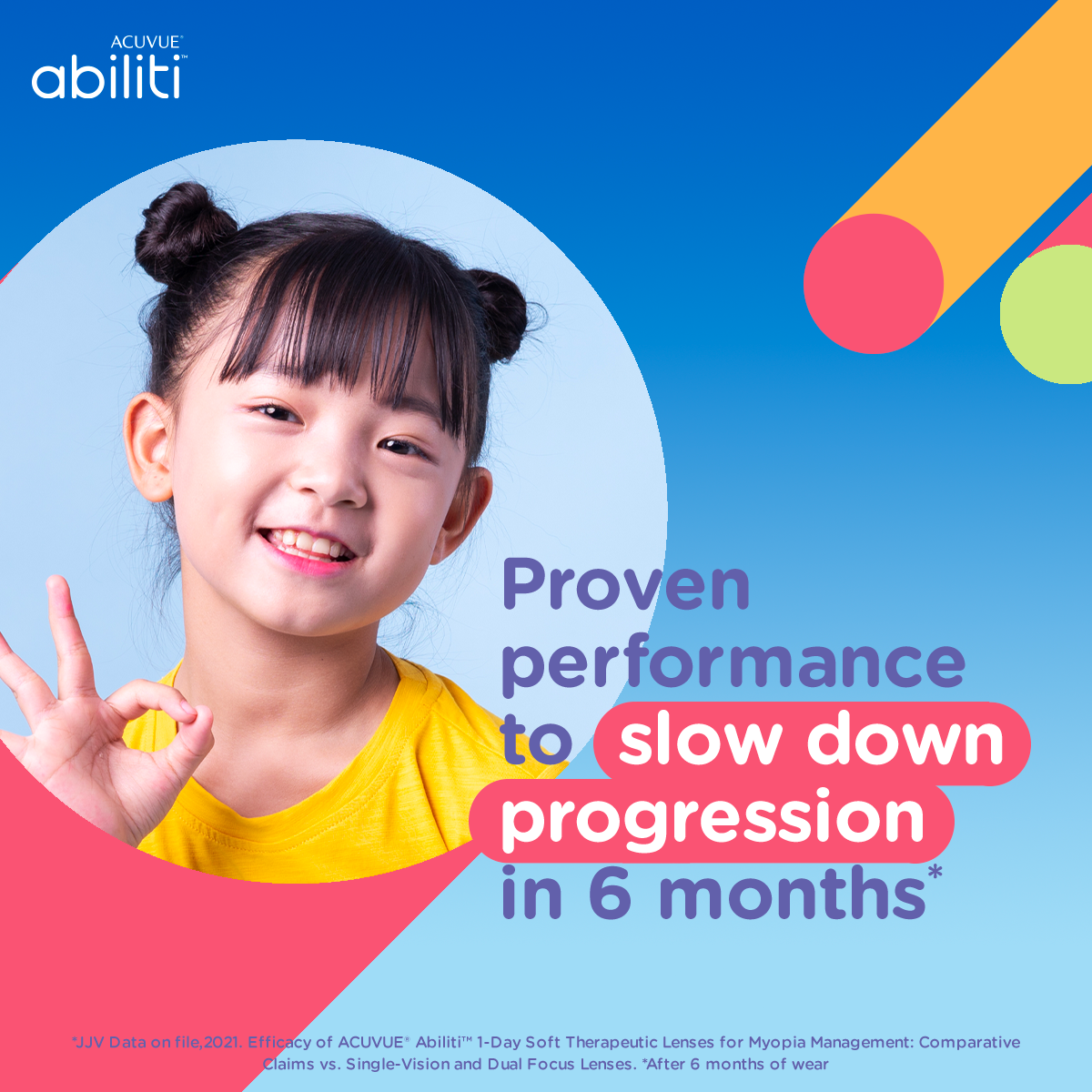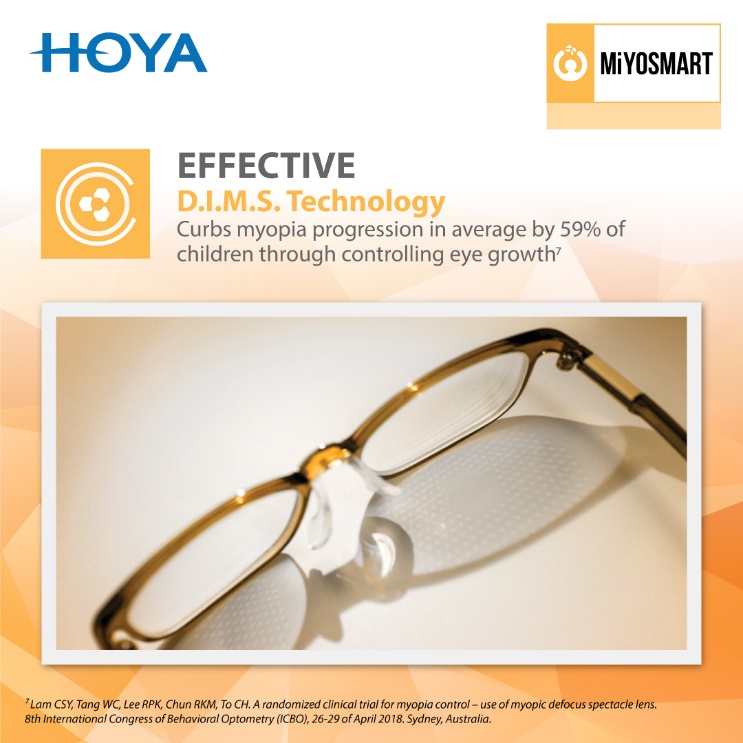.jpg)
.jpg)
Childhood Myopia Control & Management
What is Myopia?
Myopia, commonly known as short-sightedness causes difficulty for a person to see distant objects clearly without any vision aids such as spectacles or myopia control lenses. Caused by the gradual elongation of the eyeball. Myopia is an issue that can hinder your child’s learning and set them back from an early age. Progressing myopia can also lead to thinning of the retina, which can increase risk of eye diseases like retinal detachments, glaucoma & myopic maculopathy.
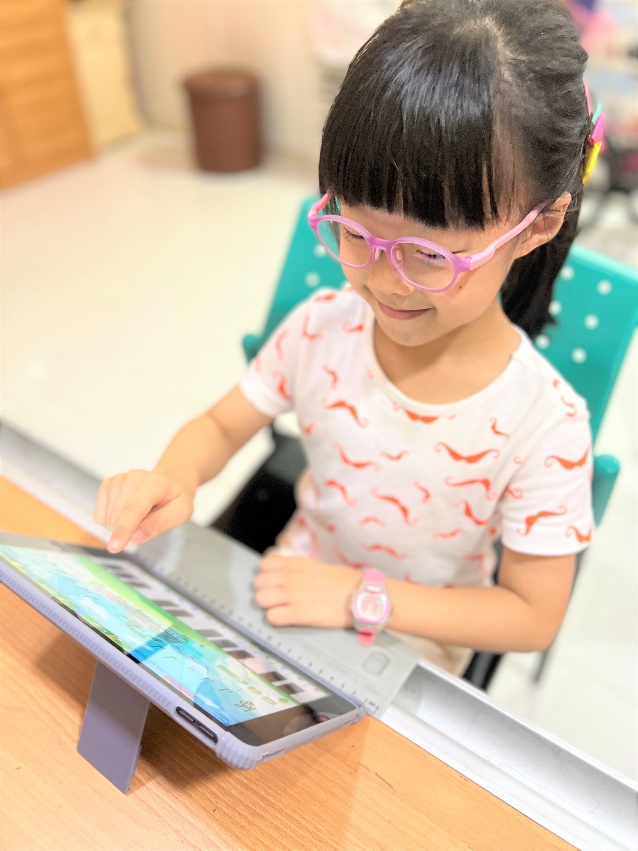
Possible Symptoms of Your Child Having Myopia
- Complaining that distance objects appear blurred
- Consistently sitting closer to the TV or holding a book too close when reading
- Squinting or tilting the head to see better
- Frequent rubbing of eyes
- Sensitivity to light and/ or excessive tearing
- Closing one eye or squinting to read or watch TV
- Complaining of headaches or tired eyes
- Often makes mistakes when copying from the board
Note to Parent:
If your child has any of the above symptoms, or if you suspect that your child may have worsening vision, it is advisable to bring your child to consult our optometrist or optician for further assessment.
Young children are advisable to have annual eye examination.
Myopia Facts: Why do we need to manage myopia?
- Myopia arises due to environmental and partly due to genetic factors.
- When both parents are myopic, there is 6X more risk of a child having high myopia
- Extended period of near visual task such as excessive reading & near digital gadgets usage may cause eye fatigue and increase your kids’ risks of having myopia
- Lack of outdoor activities & natural lights. 2-3 hours per day of outdoor time for younger children will help to reduce risk of developing myopia.
- There are no proven methods to stop or ‘cure’ myopia once a child develops myopia. But early myopia prevention or myopia control intervention is proven to slow down the progression rate & prevent high myopia at later stage of life.
- In Singapore, 28% of Primary 1 children are myopic, and by the time they reach Primary 6, almost 65% of them are myopic
Myopia Control & Intervention Management
Myopia Control describes methods used to slow the progression of myopia. The earlier the problem is identified, and control initiated the better the long-term results are likely to be.
Myopia is progressive and irreversible. As children grows, their eye’s length grows, and their myopia increases. We can reduce the damage caused by high myopia by managing it and reducing the rate of increment.
There are four widely accepted types of myopia control methods:
-
Orthokeratology (OrthoK)#
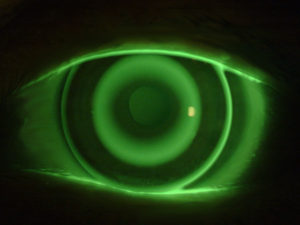

Orthokeratology commonly referred to as Ortho-K (OK lenses) or Cornea Reshaping Therapy (CRT).
Customised, unique design high oxygen permeable lenses are worn overnight to gently re-shape the cornea to provide clear vision in the day.
It acts as a mould to reshape the curvature of the cornea to improve vision thus reducing dependency of glasses in the day.
Upon successful ortho-k correction, no glasses are required in the daytime, thus a bonus for parents who have very active kids that tends to spoil or lost their glasses all the time.
Main advantage of ortho-K is that the process forms a positive defocus zone around the pupil which reduce signal for eyeball elongations thus reducing progression of myopia. Orthokeratology has been research proven to slows down myopia progression in several clinical studies.
OrthoK Reference:
Articles on OrthoK
Braces’ for the eye – Cornea Reshaping
Acuvue Abiliti One Day Lenses
ACUVUE Abiliti 1-Day Soft Therapeutic Lenses
Abiliti™ 1-Day lenses is a daily disposable silicone hydrogel lenses designed specifically for the pediatric eye to slow the progression of your child's myopia while correcting your child's vision
Clinical studies has shown that this lenses provides proven efficacy which reduce axial elongation by 0.105mm, on average, in as little as 6 months. Generally speaking, 0.18mm corresponds to approximately 0.5D of myopia.
It is paediatric inspired in design, to provide the comfort you expect from ACUVUE® OASYS® 1-Day contact lenses with easy handling for children.
https://www.seeyourabiliti.com/sg/parents/abiliti-portfolio/abiliti-1-day
Our experienced kid’s friendly optometrist will examine your child’s eyes & vision to assess suitability. And we will guide your child to handle and take proper care of their eyes & lenses. Parents just need to take the role of monitoring at home and bring your child back for their follow up checks, leave the hard work to our committed team.
MiSight 1 Day Soft Lenses
It has been shown in several studies that FDA approved MiSight contact lenses is able corrects near-sightedness and slows the progression of myopia in children (aged 8-12 at the initiation of treatment) by 59%
Suitable for more mature kids who knows how to handle soft lenses properly & not to overwear them. Most children can handle lenses well without issue.
Daily disposables contact lenses are relatively safe as it ensures that child is always using a clean lens every day.
MiSight Reference:
More about MiSight
Todays paper on MiSight in Singapre
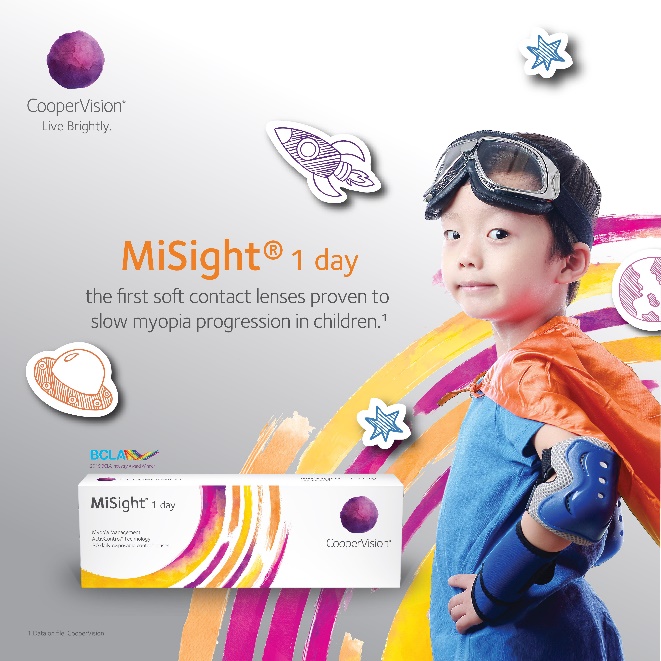
-
Myopia Control Eyeglasses
With technology-breakthrough, there is much improvement in design & efficacy of myopia control lenses nowadays.
The latest high efficacy myopia control spectacles lenses:
- Essilor Stellest™ with H.A.L.T. technology &
- Hoya MiYOSMART’s patent protected D.I.M.S technology
are able to curb progression rate by 59% to 67%* according to their clinical trail
(* information given by manufacturer)

STELLEST:
In some children, especially those with Esophoria (‘inwards turning eye’), studies have shown that wearing special kids Bifocal or Multifocal spectacle lenses will be beneficial as well. (eg, Zeiss MyoKids, Essilor Myopilux Plus & Max, Kodak Kids & Pentax Junior)
For parents who prefer glasses over contact lenses, it is wise to choose myopia control lenses over just normal single vison lenses. This is a good 1st choice of progression prevention for a child who is first diagnosed with myopia.
-
Medication Drops
Applied once a day, atropine is continued as long as myopia progression continues. It is not a cure, but it has shown to control myopia in many patients. Some studies indicate that combination of atropine + orthoK or used in conjunction with myopia control eyeglasses can further enhance the myopia control effect. Atropine are prescribed by eye doctors locally.
Which is the best myopia control method for my child?

Selections of myopia control methods based on child’s age, prescriptions and needs. Combining different methods can bring maximum myopia control outcome.
Our optometrist will follow up & monitor the progression rate of your child’s myopia to give you the best advice. We will monitor the prescription changes closely and suggest to parents what is the best intervention options that most suits the child at that time.
Having said that, parents play an important role in myopia management too! Parents can help to ensure the following:
- Take regular breaks during intensive near work – ’20-20 rule’. Rest your eye at least 20 secs for every 20 mins of near work. 10mins for every 30mins is even better if possible.
- Look at distant objects at least 20 feet away to relax your vision.
- Makes sure the child maintains a good posture & reading distance
- Provide good lighting condition at home
- Have plenty of outdoor activities
- Bring your child back for regular eye checks

